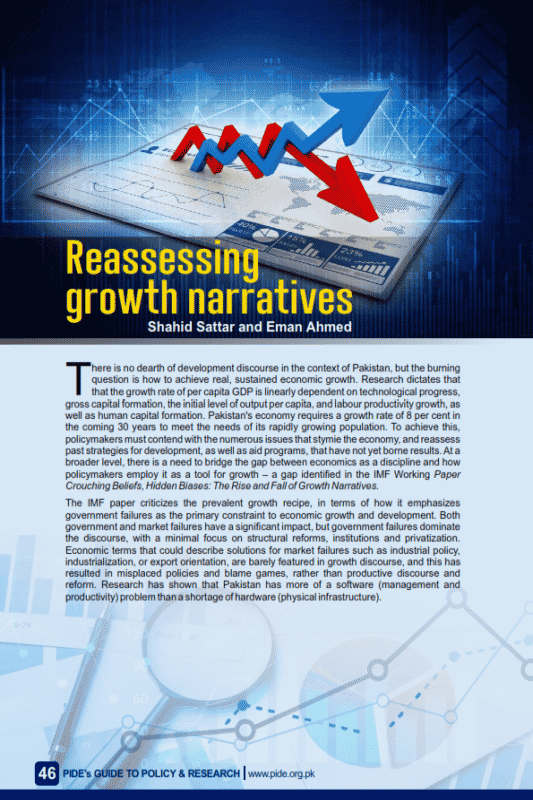
Pakistan Institute of Development Economics
- Home
Our Portals
MenuMenuMenuMenuMenuMenuMenu - ResearchMenuMenuMenuMenuMenuMenuMenu
- Discourse
- The PDR
- Our Researchers
- Academics
- Degree Verification
- Thesis Portal
- Our Portals
Reassessing growth narratives
There is no dearth of development discourse in the context of Pakistan, but the burning question is how to achieve real, sustained economic growth. Research dictates that that the growth rate of per capita GDP is linearly dependent on technological progress, gross capital formation, the initial level of output per capita, and labour productivity growth, as well as human capital formation. Pakistan’s economy requires a growth rate of 8 per cent in the coming 30 years to meet the needs of its rapidly growing population. To achieve this, policymakers must contend with the numerous issues that stymie the economy, and reassess past strategies for development, as well as aid programs, that have not yet borne results. At a broader level, there is a need to bridge the gap between economics as a discipline and how policymakers employ it as a tool for growth – a gap identified in the IMF Working Paper Crouching Beliefs, Hidden Biases: The Rise and Fall of Growth Narratives. The IMF paper criticizes the prevalent growth recipe, in terms of how it emphasizes government failures as the primary constraint to economic growth and development. Both government and market failures have a significant impact, but government failures dominate the discourse, with a minimal focus on structural reforms, institutions and privatization. Economic terms that could describe solutions for market failures such as industrial policy, industrialization, or export orientation, are barely featured in growth discourse, and this has resulted in misplaced policies and blame games, rather than productive discourse and reform. Research has shown that Pakistan has more of a software (management and productivity) problem than a shortage of hardware (physical infrastructure).



